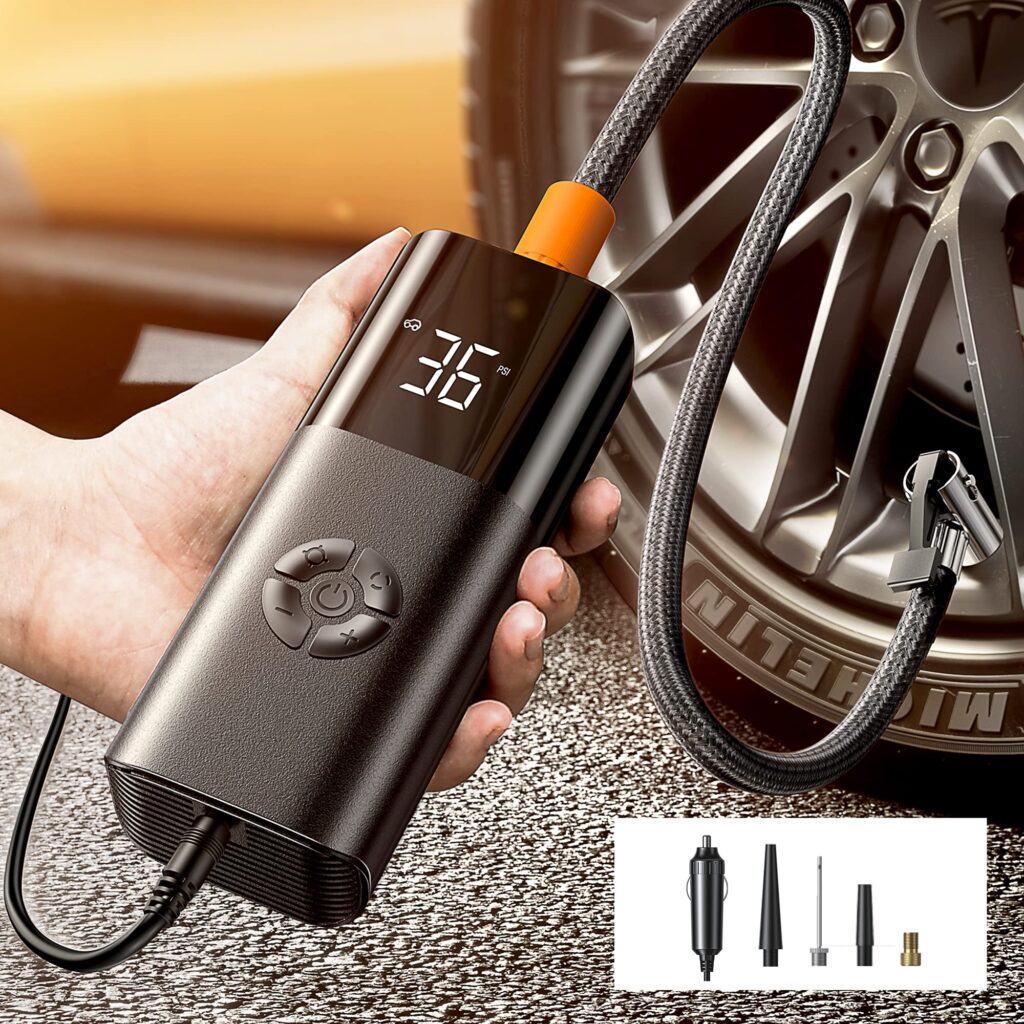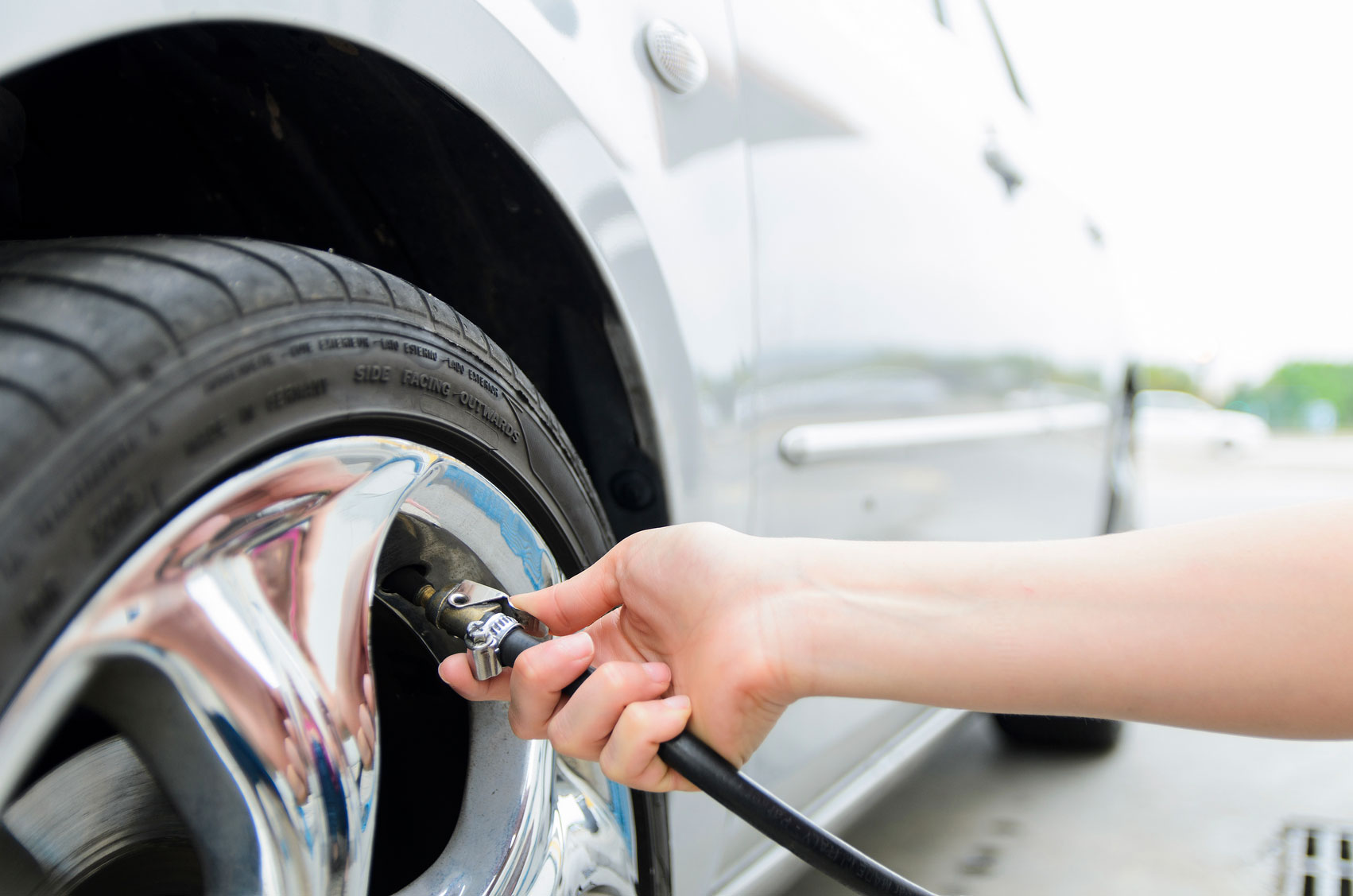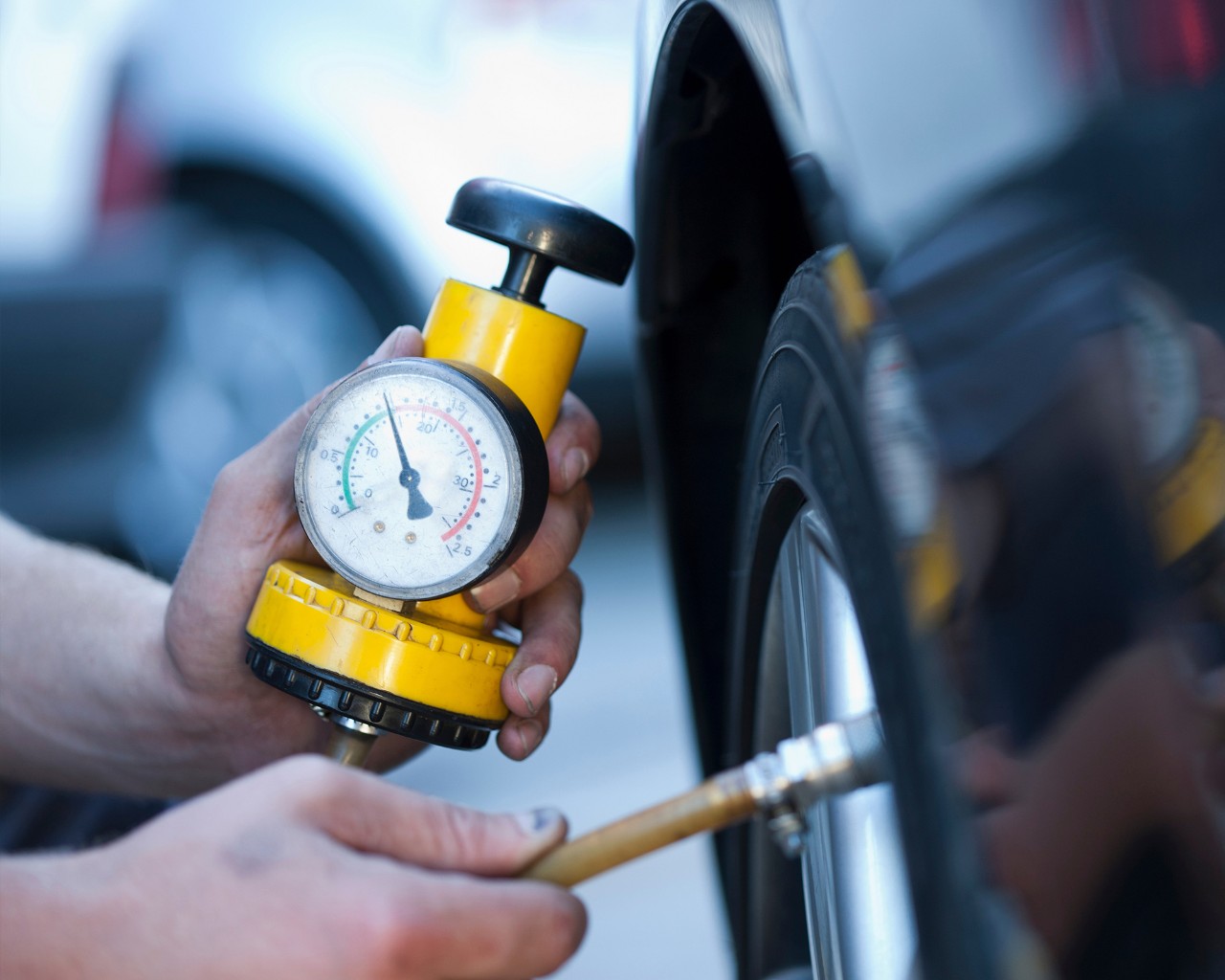Tire And Inflation Pressure: Maximize Your Ride Safety
Tires are important for your vehicle. They connect your car to the road. Proper tire inflation is vital for safety. It also affects fuel efficiency. This article explains tire pressure and how to maintain it.
What is Tire Inflation Pressure?
Tire inflation pressure is the amount of air inside your tire. It is measured in pounds per square inch (PSI). Each tire has a recommended PSI. You can find this information in your car’s manual or on a sticker inside the driver’s door.
Why is Tire Inflation Pressure Important?
- Safety: Proper tire pressure helps maintain vehicle control.
- Fuel Efficiency: Correctly inflated tires improve gas mileage.
- Tire Longevity: Good pressure extends tire life.
- Handling: Proper pressure ensures better handling of the vehicle.
How to Check Tire Pressure
Checking your tire pressure is easy. You will need a tire pressure gauge. Follow these steps:
- Find the recommended PSI for your tires.
- Remove the valve cap from the tire.
- Press the tire gauge onto the valve stem.
- Read the PSI on the gauge.
- Replace the valve cap.
When to Check Tire Pressure
It is best to check your tire pressure once a month. You should also check it before long trips. Tires can lose pressure due to temperature changes. Cold weather can lower tire pressure.
How to Inflate Tires
If your tire pressure is low, you need to inflate it. Here’s how:
- Find an air pump. You can use a gas station pump.
- Check the PSI on the pump.
- Inflate the tire slowly.
- Check the pressure often to avoid overinflation.
- Stop when you reach the recommended PSI.
Signs of Low Tire Pressure
It is important to recognize signs of low tire pressure:
- Flat tires: Tires may look flat or sag.
- Warning light: A light may turn on your dashboard.
- Poor handling: The car may pull to one side.
- Increased fuel costs: You may notice lower gas mileage.
Signs of Overinflated Tires
Too much air in your tires is also bad. Here are signs of overinflation:
- Bulging: The tire may look bulged in the middle.
- Uneven wear: The center of the tire wears faster.
- Hard ride: You may feel bumps more strongly.

How to Ensure Proper Tire Inflation for Safety Complete Guide
Ensuring proper tire inflation is crucial for vehicle safety, performance, and fuel efficiency. Under-inflated or over-inflated tires can lead to poor handling, increased tire wear, and a higher risk of blowouts. Here’s a complete guide on how to ensure proper tire inflation for safety.
1. Understand the Importance of Proper Tire Inflation
- Safety: Properly inflated tires improve vehicle handling and reduce the risk of accidents.
- Fuel Efficiency: Under-inflated tires increase rolling resistance, leading to higher fuel consumption.
- Tire Longevity: Correct inflation helps prevent uneven wear and extends the life of your tires.
2. Know Your Vehicle’s Recommended Tire Pressure
- Check the Owner’s Manual: Your vehicle’s owner’s manual will provide the manufacturer’s recommended tire pressure.
- Door Jamb Sticker: Most vehicles have a sticker located on the driver’s side door jamb that lists the recommended tire pressures for both front and rear tires.
- Consider Load and Conditions: Adjust tire pressure based on load (e.g., carrying extra cargo) and driving conditions (e.g., long trips).
3. Gather the Necessary Tools
- Tire Pressure Gauge: A reliable tire pressure gauge (digital or analog) is essential for accurate readings.
- Air Compressor or Portable Inflator: Have a compressor or portable tire inflator on hand to adjust tire pressure as needed.
- Valve Stem Tool: This tool helps remove valve caps easily and can assist with adjustments.
4. When to Check Tire Pressure
- Regular Intervals: Check tire pressure at least once a month and before long trips.
- Temperature Changes: Tire pressure can change with temperature fluctuations. Check pressure when temperatures drop or rise significantly.
- After Driving: For the most accurate reading, check tire pressure when tires are cold (i.e., after the vehicle has been parked for a few hours).
5. How to Check Tire Pressure
- Remove the Valve Cap: Unscrew the valve cap from the tire you want to check.
- Use the Tire Pressure Gauge: Press the tire pressure gauge onto the valve stem firmly. Make sure there is no hissing sound (which indicates air escaping).
- Read the Pressure: Note the reading on the gauge. If using a digital gauge, it will display the pressure automatically.
- Replace the Valve Cap: After checking, replace the valve cap securely to prevent dirt and moisture from entering.
6. Adjusting Tire Pressure
- If the Pressure is Low:
- Use an Air Compressor: Attach the air compressor or inflator to the valve stem.
- Inflate to the Recommended PSI: Fill the tire until it reaches the recommended pressure. Use the tire pressure gauge frequently to avoid over-inflation.
- Check Again: After inflating, check the pressure again to ensure it’s correct.
- If the Pressure is High:
- Release Air: Press the metal stem inside the valve with a small tool (like a flathead screwdriver) to release some air.
- Check Pressure Again: Use the gauge to monitor the pressure as you release air.
- Replace the Valve Cap: Once the pressure is at the recommended level, replace the valve cap.
7. Understanding Tire Pressure Changes
- Temperature Effects: Tire pressure decreases by about 1 PSI for every 10°F drop in temperature. Conversely, it increases with heat generated from driving or higher ambient temperatures.
- Load Changes: Carrying heavy loads can require higher tire pressure. Always refer to the vehicle’s specifications for adjustments based on load.
8. Inspecting Tires for Damage
While checking tire pressure, also inspect for visible damage:
- Tread Wear: Look for uneven wear patterns, which can indicate improper inflation or alignment issues.
- Cracks and Bulges: Inspect the sidewalls for any cracks, bulges, or punctures that could compromise the tire’s integrity.
- Foreign Objects: Remove any stones or debris lodged in the tread.
9. Regular Maintenance
- Rotate Tires: Regularly rotate your tires as recommended (typically every 5,000 to 7,500 miles) to ensure even wear.
- Alignment and Balancing: Get your wheels aligned and balanced periodically to prevent uneven tire wear and maintain handling.
- Replace Worn Tires: Replace tires that are worn beyond the tread wear indicators or have significant damage.
10. Using Technology for Tire Monitoring
- Tire Pressure Monitoring Systems (TPMS): Many modern vehicles come equipped with TPMS that alert you when tire pressure is too low. Familiarize yourself with how your system works.
- Smartphone Apps: Some tire inflators and monitoring systems connect to smartphone apps, allowing you to monitor tire pressure in real-time.
Tire and Inflation Pressure Maintenance Guide
Proper tire maintenance is essential for your safety, fuel efficiency, and getting the most out of your tires. This guide will help you understand common tire and inflation issues, and the steps needed to keep your tires in excellent condition.
Common Tire and Inflation Issues
Here are some of the most frequent problems caused by improper tire inflation pressure and how they can affect your driving experience:
1. Uneven Tire Wear
- Cause: Over- or under-inflated tires.
- Effect: Premature tire replacement due to uneven tread wear.
2. Frequent Punctures
- Cause: Driving on under-inflated tires makes them more prone to damage from sharp objects.
- Effect: Increased likelihood of roadside repairs or costly replacements.
3. Reduced Fuel Efficiency
- Cause: Incorrect tire pressure increases rolling resistance.
- Effect: Your vehicle uses more fuel, impacting your budget and the environment.
4. Higher Risk of Blowouts
- Cause: Under-inflated tires generate excessive heat, especially during highway driving or in hot weather.
- Effect: Tire blowouts, which can lead to dangerous situations on the road.
5. Accelerated Tire Wear and Reduced Braking Efficiency
- Cause: Over-inflated tires can result in less contact with the road surface.
- Effect: Faster tire deterioration and diminished stopping power, reducing overall safety.
Recommended Maintenance Schedule
Regular tire maintenance helps minimize issues and ensures optimal performance. Follow this schedule to keep your tires safe and properly inflated:
1. Check Tire Pressure Monthly
- Use a reliable tire pressure gauge to check all tires, including the spare.
- Compare the pressure levels to the vehicle manufacturer’s guidelines, typically found in the owner’s manual or on a label inside the driver’s door.
2. Inspect Before Long Trips
- Before embarking on any long road trip, thoroughly examine your tires and adjust the inflation pressure as needed.
3. Monitor During Extreme Temperatures
- Temperature fluctuations affect tire pressure. Cold temperatures tend to reduce pressure, while heat can increase it. Monitor more frequently during seasonal shifts.
4. Look for Damage Regularly
- Inspect tires for punctures, cuts, bulges, or any other abnormal signs that could compromise inflation pressure. Address these immediately to avoid larger issues.
5. Follow Manufacturer’s Rotation and Alignment Recommendations
- Rotating tires every 5,000–7,500 miles (or as recommended by your vehicle’s manufacturer) ensures even wear.
- Schedule regular wheel alignments to help maintain proper tire health and inflation pressure.
Importance of Proper Maintenance
Maintaining the correct tire pressure isn’t just about the longevity of your tires—it’s about safety and performance. Properly inflated tires ensure better fuel efficiency, superior handling, and reduced long-term costs. By staying on top of these simple maintenance tasks, you’ll increase your road safety and your peace of mind!
Pro Tip: Make tire checks a habit. Set a monthly reminder and incorporate inspections into your vehicle’s routine maintenance schedule to avoid complications down the road.

Tips for Maintaining Tire Pressure
Here are some simple tips to keep your tires in good shape:
- Check tire pressure monthly.
- Keep a tire gauge in your car.
- Inflate tires when they are cold.
- Rotate your tires every 5,000 to 7,500 miles.
- Inspect tires for damage regularly.
Effects of Weather on Tire Pressure
Weather can change tire pressure. Here’s how:
- Cold Weather: Tire pressure drops in cold temperatures.
- Hot Weather: Tire pressure increases in hot temperatures.
Be aware of these changes. Adjust your tire pressure accordingly.
Common Misconceptions About Tire Pressure
Many people have misunderstandings about tire pressure. Here are a few:
- Misconception: Tires don’t need checking often.
- Truth: Check tires monthly for safety.
- Misconception: All tires have the same pressure.
- Truth: Different tires need different PSI.
Conclusion
Tire inflation pressure is crucial for safety. Regular checks and maintenance can prevent problems. Make it a habit to check your tire pressure. Follow the tips in this guide for better driving. Safe travels start with well-maintained tires!
Frequently Asked Questions (FAQs)
1. How Often Should I Check My Tire Pressure?
Check your tire pressure once a month and before long trips.
2. What Is The Recommended Psi For My Tires?
The recommended PSI can be found in your car’s manual or on a sticker inside the driver’s door.
3. Can I Inflate My Tires At Any Gas Station?
Yes, most gas stations have air pumps for tire inflation.
4. What Should I Do If My Tire Is Flat?
Change the tire or call for assistance if you cannot do it yourself.
5. How Do I Know If My Tires Are Overinflated?
If the center of the tire wears faster, it may be overinflated.
6. Can I Use A Different Psi From What Is Recommended?
No, always follow the recommended PSI for safety and performance.
7. What Tools Do I Need To Check My Tire Pressure?
You need a tire pressure gauge to check the PSI.
By following these guidelines, you can keep your tires in top condition. Proper tire maintenance will ensure a safe and smooth ride.

